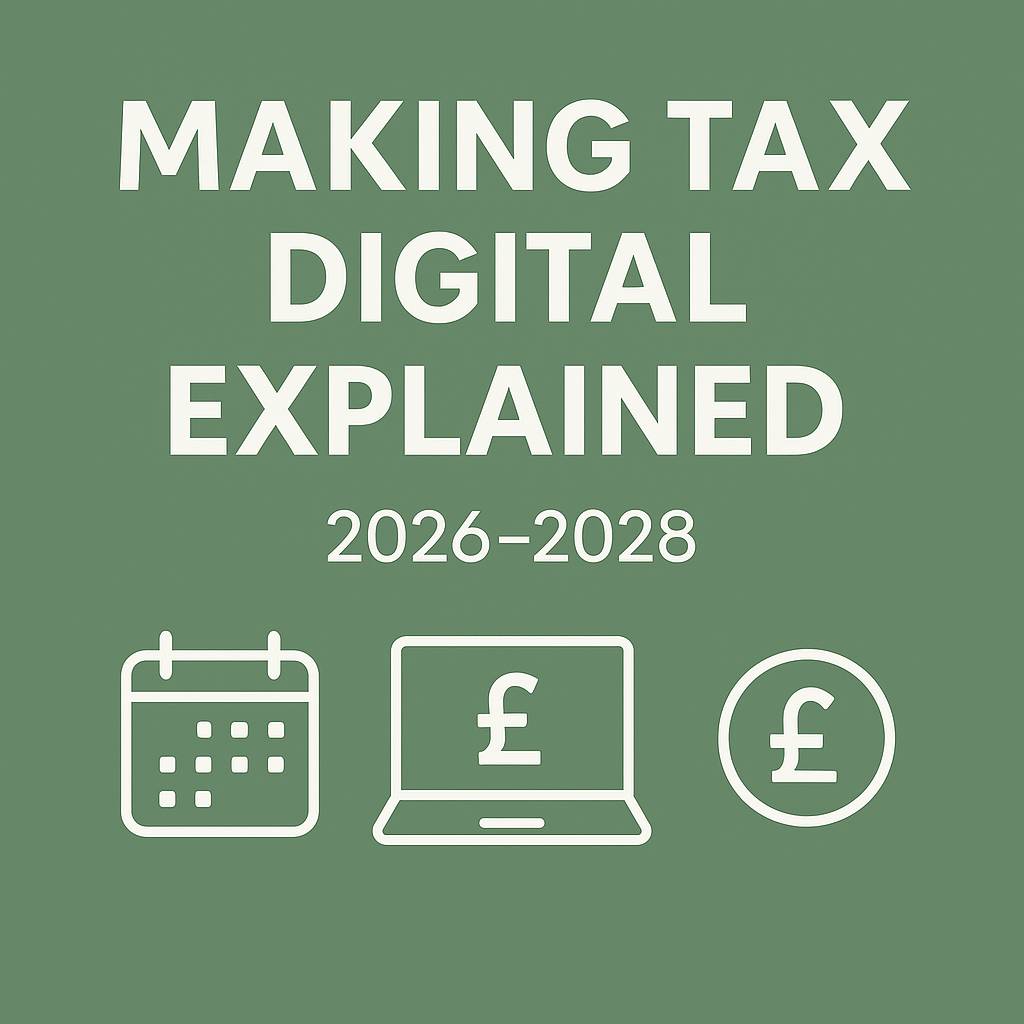If you’re Self-Employed, then within the next couple of years your Self-Assessment Tax Return is going to come under the government’s Making Tax Digital (MTD) regulations. And yes, I know what you’re thinking — more Government rules to make my life more difficult.
It’s true that making the transition might mean putting some extra work in, but you could find it being a benefit in the long run. So, what is MTD, and what are its benefits — and challenges?
What is Making Tax Digital?
It sounds scary — but really MTD is just an extension of what most of us are doing anyway. At the moment, it’s still perfectly legal to send in a paper tax return and keep your receipts in a shoebox under your bed — but we don’t do that, do we? At least, if you do, we need to talk.
Under MTD, you’ll be required to both keep your records and file your Return in digital format, using MTD-compatible software. You’ll also need to file returns quarterly, instead of annually. If you make over £50,000, this will become compulsory from April next year, and for incomes over £30,000 from April 2027.
How Making Tax Digital Can Work for You
In many ways, MTD will make life easier for you, since the software is designed to be easy to use and save time. If you already use a digital accounting platform, such as QuickBooks, you know how much simpler it makes recording your income and transactions, as well as calculating the relevant totals.
Not only is this method faster and less effort than working everything out on spreadsheets or written ledgers, but you’re also far less likely to make a mistake. Most of the major accounting platforms are either already compatible with MTD or are working to achieve this before the deadline, so the transition should be smooth for you.
In the same way, you’re probably already filing your Self-Assessment Tax Return online. So, you know how much easier that is than working your way through a paper form. After the first time, much of the information is automatically filled in — you just have to enter a few figures that your digital accounting package will provide for you.
Perhaps the aspect of MTD you might feel most apprehensive about is having to file your figures quarterly. While this may involve a little more work, though, you’ll find major benefits. You’ll have a much clearer idea of your tax liability on an ongoing basis, which will make it easier to plan in the long term.
The Challenges of Setting Up Making Tax Digital
If you already use an MTD-compatible accounting software, like QuickBooks, and file your Returns online, you’ll find that very little has changed. If you don’t currently use one or both of these, however, there’s likely to be some adjustment required.
You’ll need to find and sign up to a suitable software package. This will involve an extra monthly cost, although in general the main options aren’t expensive. You’ll also have a period of getting used to using it, as well as learning how to file your Return digitally. In addition, you’ll need to ease into the new schedule of quarterly returns.
In general, none of these processes should be too difficult. If you need guidance on how to prepare for MTD, however, feel free to reach out to me here at Grace Certified Accountants, on info@gracecertifiedaccountants.co.uk, for expert advice.
